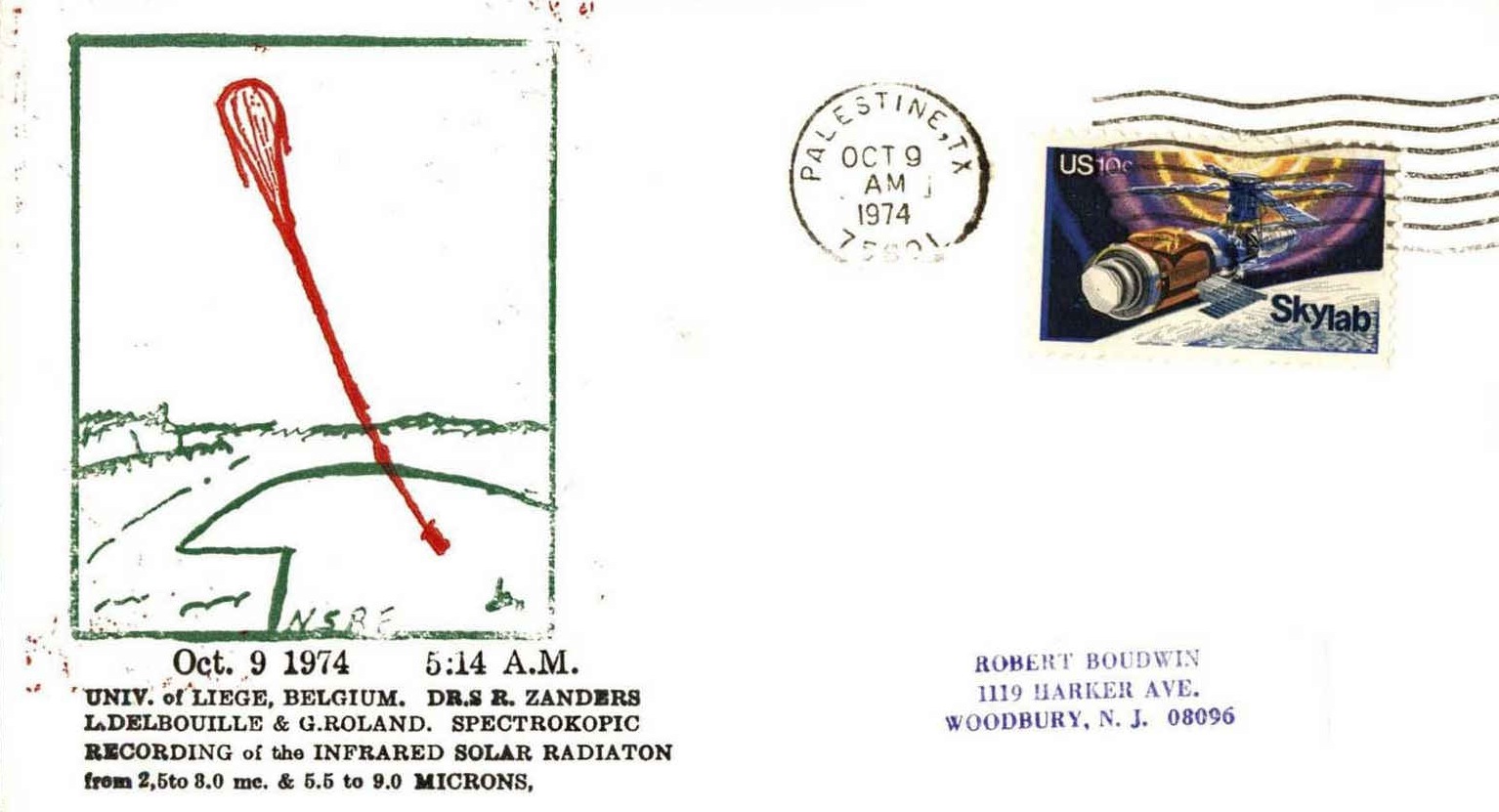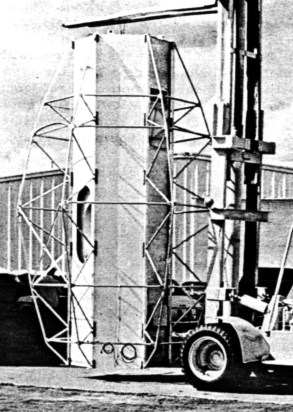Purpose of the flight and payload description
To complement the spectroscopic observations of the sun with high spectral resolution done at the Jungfraujoch International Scientific Station in the Swiss Alps, the Institute of Astrophysics of the University of Liege, from Belgium developed a balloon-borne instrument to observe in all spectral regions not accessible from the ground.
The instrument was composed by a 40-cm aperture Ritchey-Chretien telescope, associated with an Ebert-Fastie-type grating spectrometer of 2.5 meters of focal length. A gimbaled plane mirror directed the solar radiation within the telescope. A solar image of 56 mm diameter was produced in the focal plane of the telescope and its central part was then transferred and focussed onto the entrance slit of the spectrometer by two mirrors. The main mirror of the instrument was spherically shaped to a radius of curvature of 5 meters. Two different gratings were available for covering the 1.5 to 15 microns region. The working order selection was obtained with a set of interference filters mounted on a filter-wheel. All mirrors and mounts were made from light aluminium alloy, kanigen-coated and the optical surfaces were aluminized.
During development was decided to adopt a double-pass configuration, instead os a single one. This allowed to reduce the level of diffused light at the exit slit, to remove spurious grating defects and also to provide an instrumental profile free of secondary "aperture-diffraction maxima". For the 1.5 to 3.0 microns region, the incoming radiation was focussed onto a lead sulfide cell, cooled down to -70°C by thermoelectrical effect; a second PbS detector located near and parallel to the intermediate slit allowed to record simultaneously the spectrum in single pass.
During the scanning, the signals detected by the cells were synchroneously amplified and stored in an on-board magnetic tape recorder as well transmitted to the ground by telemetry for real-time monitoring and optimisation of the equipment by telecommand. A tungsten lamp, which could be placed temporarily in the optical path, was used for in-flight realignment of the spectrometer; it also allowed to determine spectroscopically, the amount of water vapor inside the instrument.
The instrument was mounted inside a 4.75 meter high balloon gondola which contained the optics and all components. The gondola, as well as the telescope and spectrometer frames were made out of aluminium honeycomb. The pointing process was acomplished in two steps. A first coarse pointing using silicon solar sensors which controled an inertial wheel on top of the gondola to direct the aperture of the instrument towards the sun, then the fine pointing was completed moving the main mirror which was mounted in a two-axis gimbaled system, and controlled by torque motors servo-controlled by two pairs of fine solar sensors. The total weight of the balloon equipment was approximately 1100 Kgs.
The program was active from 1969 until 1993, performing 27 balloon flights.
Details of the balloon flight
Balloon launched on: 10/9/1974
Launch site: Columbia Scientific Balloon Facility, Palestine, Texas, US
Balloon launched by: National Scientific Balloon Facility (NSBF)
Balloon manufacturer/size/composition: Zero Pressure Balloon Winzen - 87.783 m3 (50.80 microns - Stratofilm)
Flight identification number: 854P
End of flight (L for landing time, W for last contact, otherwise termination time): 10/9/1974
Balloon flight duration (F: time at float only, otherwise total flight time in d:days / h:hours or m:minutes - ): F 8 h 50 m
Payload weight: 1265 kg
This flight (ULG-8) was the eight mission of the program and was specifically devoted to the recording of the solar spectrum in the 2,5 to 2,8 microns region. The flight was successful and provided good solar spectra from 2.46 to 2.84 microns, with a spectral resolution of 0.04 curl. Fraunhofer lines have been identified and further informations on the concentration of CO2 and H20 in the upper stratosphere have been deduced
Postal cover issued on launch day commemorating the flight

External references
- National Scientific Balloon Facility Annual Report FY 1975 National Center for Atmospheric Research, November 1975
4992If you consider this website interesting or useful, you can help me to keep it up and running with a small donation to cover the operational costs. Just the equivalent of the price of a cup of coffee helps a lot.


